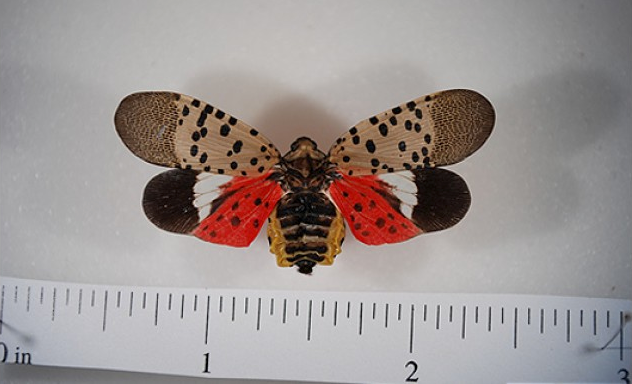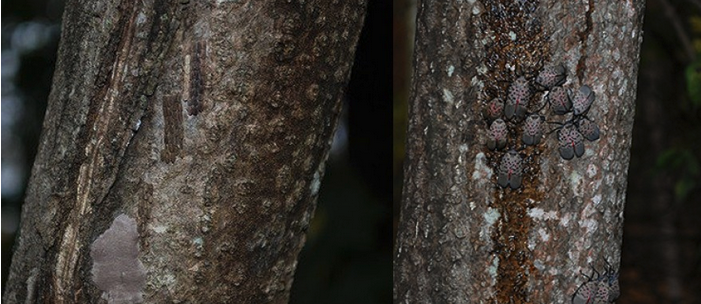
By BRIAN GRIMMETT
Kansas News Service
A 4-H student presenting a project at the Kansas State Fair has inadvertently triggered a state and federal investigation into a nasty, unwelcome bug.
Known as the spotted lanternfly, the Asian bug secretes a sticky substance that can prevent plants and trees from performing photosynthesis. In many cases, it ends up killing the plant.
It loves to feed on woody, fruit and ornamental trees.
The student found the bug in Thomas County in western Kansas and included it in a 4-H entomology display.
One of the judges recognized the bug species, which the student had correctly identified and labeled, and knew that he needed to notify the U.S. Department of Agriculture’s Animal and Plant Health Inspection Service.
The Kansas Department of Agriculture will lead the investigation.
“This does happen occasionally where we’ll see information about an insect and we’ll do some investigation and find out if there's anything to indicate that there’s a real problem,” said Kansas Department of Agriculture spokeswoman Heather Lansdowne.

The invasive bug appeared in Pennsylvania in 2014. Because the bug is a good hitchhiker, there are now at least 45 counties in Pennsylvania and New Jersey with quarantine orders.
That means people in those areas have to follow a checklist before moving cars or recreational vehicles outside of the area. The order has them check for signs of the bugs or their eggs.
The bug is native to China and it is suspected to have arrived in the U.S. on a container ship.
This year’s outbreak in Pennsylvania has been particularly bad. State agriculture officials told NPR earlier this year that if they ever see the bug they should, "Kill it! Squash it, smash it. ... Just get rid of it."
The threat of an established population appears to be mostly contained to states in the Northeast. The bug found in Kansas likely got there by hitching a ride on an RV or other vehicle, said Lansdowne. Interstate 70 runs through Thomas County.
“There’s not a reason to be alarmed at this point,” Lansdowne said. “It was one insect that was found and it’s no longer alive.”
Brian Grimmett reports on the environment, energy and natural resources for KMUW in Wichita and the Kansas News Service. You can follow him on Twitter @briangrimmett or email him at [email protected].






